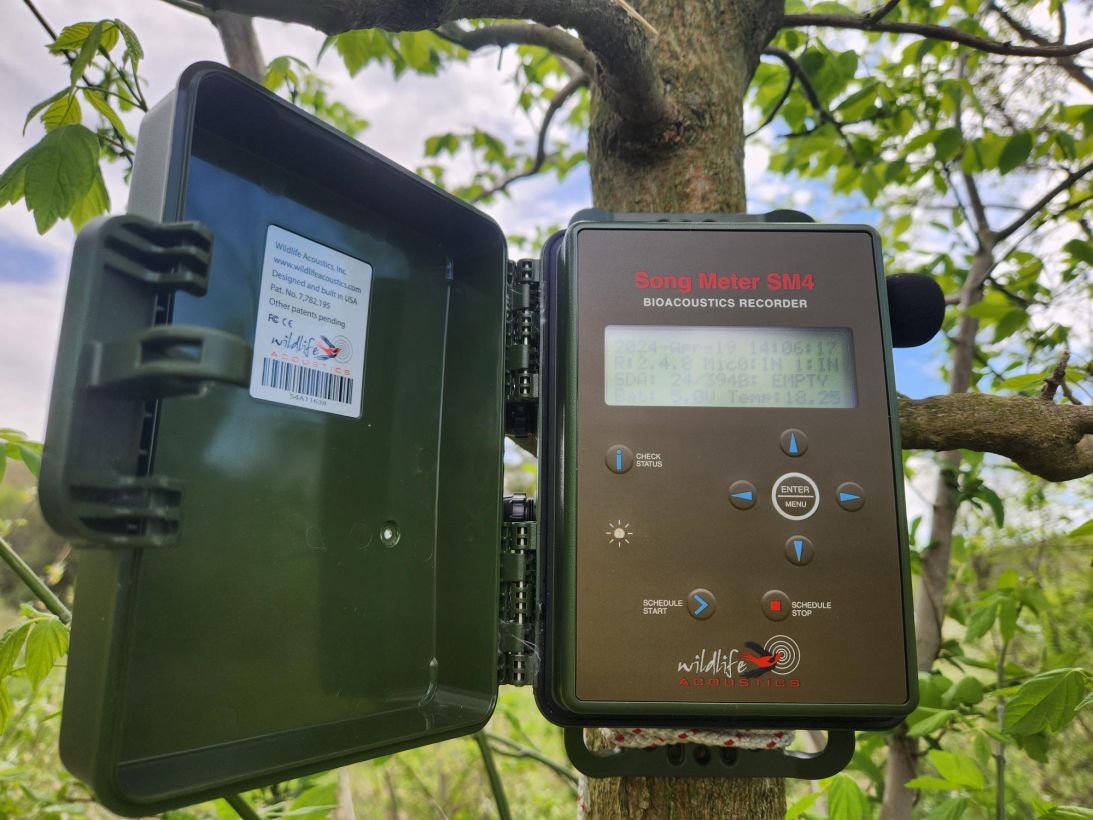Science
Total Solar Eclipse Triggers ‘False Dawn Chorus’ in Birds

The total solar eclipse on April 8, 2024, caused a significant and temporary disruption in the biological clocks of various bird species across North America. As the moon obscured the sun, plunging regions from Mazatlán, Mexico, to St. Johns, Newfoundland, Canada, into darkness for just a few minutes, research indicated that 29 species of birds began to sing as though it marked a new day. This phenomenon was documented in a study published in the journal Science.
The eclipse presented a unique opportunity for scientists to observe animal behavior in response to sudden changes in light. According to Liz Aguilar, lead author and doctoral student at Indiana University Bloomington, the event served as a natural experiment, revealing how sensitive birds are to light variations. “Light is one of the most powerful forces shaping bird behavior,” Aguilar noted. The study relied on data from citizen scientists who contributed nearly 11,000 observations through a smartphone app named SolarBird, designed specifically for the event.
Community Science Captures Bird Behavior
The eclipse took place during spring, a critical period when many birds engage in mating rituals and territorial displays. This seasonal timing heightened the relevance of the findings, as birds typically vocalize most around dawn and dusk. The darkness experienced during the eclipse lasted for approximately four minutes and 15 seconds in Bloomington, Indiana.
To enhance public engagement and gather data simultaneously, Aguilar’s team developed the SolarBird app, which allowed users to document bird behaviors during the eclipse. Participants recorded instances of birds singing, flying, or foraging, contributing to a broader understanding of how birds respond to environmental changes. “Community scientists were absolutely essential to this project,” Aguilar emphasized, highlighting the extensive geographical reach of the eclipse.
In addition to the app, the research team installed specialized audio recorders across southern Indiana, collecting around 100,000 bird vocalizations before, during, and after the totality. The data collected revealed that of the 52 bird species active during the eclipse, 29 exhibited changes in their vocal patterns.
Insights into Bird Responses
The analysis indicated that as the skies darkened, 11 bird species increased their singing, while others fell silent. The most pronounced changes occurred with the return of sunlight, as 19 species participated in what researchers termed a “false dawn chorus.” For example, barred owls called out four times more frequently than normal, while robins sang at six times their usual rate.
Aguilar explained that different species have distinct responses to light fluctuations. “Not all species reacted the same way,” she noted. Those in the path of totality, where the moon completely covered the sun, showed the strongest responses. While the study did not aim to measure long-term effects, Aguilar pointed out that the time taken for birds to respond to the eclipse could have potentially impacted their foraging or mating behaviors.
The findings resonate with previous studies, such as those conducted during the total solar eclipse of 2017, which observed similar behavioral changes among zoo animals. Dr. Andrew Farnsworth, a visiting scientist at the Cornell Lab of Ornithology, noted the importance of crowdsourced data in understanding how organisms perceive and respond to their environments.
As light pollution continues to disrupt natural behaviors in birds, research like this is vital. Studies have shown that artificial light can lead to extended vocal activity and disorientation in migrating birds, contributing to fatal collisions with buildings. “Knowing which species are most affected could help focus conservation efforts where they’re needed most,” Aguilar concluded.
The total solar eclipse not only captivated millions but also provided invaluable insights into the intricate relationship between light and avian behavior, highlighting the critical need for conservation strategies in an increasingly illuminated world.
-

 Lifestyle5 months ago
Lifestyle5 months agoLibraries Challenge Rising E-Book Costs Amid Growing Demand
-

 Sports4 months ago
Sports4 months agoTyreek Hill Responds to Tua Tagovailoa’s Comments on Team Dynamics
-

 Sports4 months ago
Sports4 months agoLiverpool Secures Agreement to Sign Young Striker Will Wright
-

 Lifestyle4 months ago
Lifestyle4 months agoSave Your Split Tomatoes: Expert Tips for Gardeners
-

 Lifestyle4 months ago
Lifestyle4 months agoPrincess Beatrice’s Daughter Athena Joins Siblings at London Parade
-

 Science4 months ago
Science4 months agoSan Francisco Hosts Unique Contest to Identify “Performative Males”
-

 World4 months ago
World4 months agoWinter Storms Lash New South Wales with Snow, Flood Risks
-

 Science5 months ago
Science5 months agoTrump Administration Moves to Repeal Key Climate Regulation
-

 Business5 months ago
Business5 months agoSoFi Technologies Shares Slip 2% Following Insider Stock Sale
-

 Science5 months ago
Science5 months agoNew Tool Reveals Link Between Horse Coat Condition and Parasites
-

 Sports5 months ago
Sports5 months agoElon Musk Sculpture Travels From Utah to Yosemite National Park
-

 Science5 months ago
Science5 months agoNew Study Confirms Humans Transported Stonehenge Bluestones









